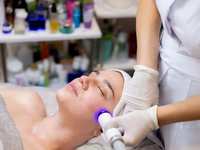After getting Dysport injectables, it’s totally normal to wonder when you can hit the gym again or get back to your usual workout routine. Exercise is a big part of many people’s lives, so it’s not surprising that one of the most common questions after treatment is, “When can I move like normal again?” While Dysport is known for being quick and minimally disruptive, there are still some aftercare steps to help things settle in smoothly.
The hours and days right after your injectable session are more important than people think. The way your body moves and handles pressure can influence how long your results last or even how even they look. Caring for the treated area means giving it a break from certain activities. Let’s talk about what you can and can’t do post-treatment to make sure you’re setting yourself up for the best possible outcome.
Immediate Post-Injectable Guidelines
Right after you’ve had Dysport injectables, the main goal is keeping things calm and steady. Most professionals will tell you the first 24 hours matter a lot. That doesn’t mean you have to lock yourself in a room, but a few reasonable precautions can go a long way.
Here’s what you’ll want to do and avoid in the first day:
– Skip the gym. Strenuous movement can cause the injectable product to shift before it sets in the right spot.
– No bending over repeatedly or lying flat for long stretches. Keep your head upright as much as you can.
– Avoid rubbing or massaging the treated areas. Touching them too much can affect how evenly the product spreads.
– Don’t put any makeup on over the treated area until you’re given the go-ahead.
– Keep the treated areas clean and free of sweat. Wait before jumping into hot environments like saunas or steamy showers.
– Drink water and take it easy.
This isn’t about being overly strict. It’s about keeping the results from being disrupted. Think of it like painting a wall. If you touch it too soon, you smudge the paint. Injectables work kind of the same way. The product needs a little time to settle, and intense motion right away could interfere with that.
When Can You Resume Exercise?
Getting back to working out doesn’t take long. Most people find they’re able to return to simple movement within a day or two. The key is to ease in gently instead of jumping into high-impact training.
Here’s a simple breakdown:
1. Light walking and daily chores
If something isn’t making you sweat or strain, it’s likely fine after the first day. A walk around the neighborhood? No problem. Laundry or dishes? Go for it.
2. Low-impact exercise
Once about 48 hours pass and you’re not feeling any tenderness, you can likely get back into activities like stretching, light cycling, or strength exercises that don’t involve bending your head down or raising your blood pressure too high.
3. Full workouts, including cardio or HIIT
These should wait until your provider gives you the okay, usually after three to five days. Higher heart rates and muscle strain can increase swelling or move the product into areas it wasn’t meant to settle.
One real-life example: a client resumed jogging the day after their appointment and noticed that one brow looked slightly higher than the other a week later. That’s the kind of thing that isn’t worth the rush. A few extra rest days can help your facial muscles relax properly and let the injection do its thing without extra pressure or motion.
Taking it slow at first doesn’t mean giving up your routine. Just like you wouldn’t do a heavy leg day right after pulling a muscle, you want to let your face recover before putting it through motion that could mess with your results. Start slow, listen to your body, and allow the treatment to settle in fully.
Activities to Avoid and Why
Once you’re clear to start light activity again, keep in mind that not all movement is helpful right away. Some actions can still put pressure on the treated areas or accidentally move the product before it settles. The goal is to let your muscles and the injectable adjust without any outside interference.
Here are a few things to put on hold for a few days:
– Heavy weightlifting, especially exercises where you lie flat or bend forward repeatedly
– Contact sports or anything with rapid head movements
– Intense cardio, like running, spinning, or high-intensity interval training
– Hot yoga or similar heated workouts
– Swimming, especially in chlorinated pools
– Steam rooms, saunas, or hot tubs
These activities either raise your core temperature or increase blood flow, which can potentially spread the product outside the targeted area. Movements like headstands or deep forward bends can shift things through gravity alone. Even something seemingly harmless, like a facial or massage, can push around the treated zones if done too soon.
If staying active is important to you, lean into alternatives like:
– Casual neighborhood walks
– Gentle stretching while seated or lying with your head supported
– Chair workouts that keep your torso upright and avoid strain
Keeping activity low-impact not only helps the product settle in place but also lowers the chances of swelling or discomfort. And getting back into motion slowly helps your muscles return to their usual rhythm without fighting against the treatment.
Monitoring Your Progress and When to Seek Help
While post-treatment downtime isn’t long, it’s always smart to watch how your skin responds. A few mild changes right after a session, like slight redness, tenderness, or tightness, are normal. These usually fade on their own after a day or two.
That said, pay attention to how your face feels and looks during the first week. Signs that may need a second look include:
– Swelling that gets worse instead of better
– Lingering pain or discomfort in the injection area
– Uneven results or muscle movement that feels off
– Headaches that don’t improve with rest and hydration
One mistake people make is brushing off these signs and assuming everything will sort itself out. It helps to trust your instincts. If something feels off, reach out to your provider. Most of the time, it’s minor, but it’s better to check and feel peace of mind.
Taking a few photos over the first few days can also help you see the changes more clearly. You might not notice subtle shifts in the mirror every day, but comparing pictures side by side offers a clearer picture of your progress.
Getting Back Into Your Routine with Confidence
Once you’ve passed the window of early healing, you can return to your usual exercise habits without worry. Just remember that temporary adjustments play a big role in getting results that look natural and last longer. The key is paying attention to how your body responds right after treatment and easing into your lifestyle with care.
If you build awareness into your workout plan after Dysport, you’ll likely have a smoother experience. Following provider recommendations and making thoughtful choices in the first few days can help the treatment do its job and allow your muscles to settle the way they’re meant to.
Your regular workouts will still be there after a short break. Focusing on movement that supports healing without rushing it helps you stay on track without compromising the effects of your injectables. Each step you take to check in with your body adds up to better overall results.
Ensure your post-Dysport recovery is smooth and effective with a thoughtful approach to exercise and wellness. At Body BeneFits MedSpa, we provide insights and support to make your transition back to activity seamless. Explore how our Dysport injectables can fit into your active lifestyle, helping you achieve natural, lasting results with confidence.















